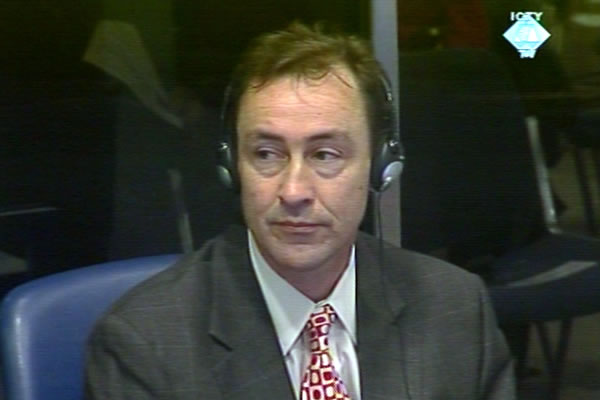Home
‘TURNING SARAJEVO’S TERROR TAPS’
Describing the situation in wartime Sarajevo, UN official David Harland said that the level of the terror campaign against the city would vary, depending on the degrees of pressure by the international community on the Bosnian Serb leadership. According to Harland, this showed that the ‘terror tap’ was turned on and off at the government top
 David Harland, witness at the Radovan Karadzic trial
David Harland, witness at the Radovan Karadzic trial New Zealander David Harland spent two and a half war years as the head of the UN Civil Affairs in Bosnia and Herzegovina, from May 1993 to the end of 1995. In his evidence today at the trial of former Republika Srpska president Radovan Karadzic, Harland said that the artillery and sniper attacks on the city were often excessive: their purpose was to ‘terrorize’ the civilians.
The witness noted that the pressure on Sarajevo rose and fell at the whim of the top leadership. The Bosnian Serbs used other ‘levers of terror’, apart from artillery and sniper fire, such as cutting off the electricity, water or gas supply or preventing the delivery of humanitarian aid.
All ‘levers of control’ were used simultaneously: if the shelling and sniper attacks intensified, the electricity, water and gas would be cut off, to be restored when the shelling became less intense. In his statement to the OTP investigators in 2009, Harland called it ‘turning the terror taps on and off’. Harland noticed that the intensity of the terror campaign against Sarajevo ‘decreased drastically’ whenever the international pressure ramped up pressure on the Bosnian Serb leadership. ‘When the pressure decreased, the tap would be turned on and the terror campaign would be stepped up’, Harland stated.
The witness concluded that the intensity of the terror campaign against Sarajevo was regulated from ‘a single centre’, the Bosnian Serb government top. At the meetings with the Bosnian Serb leadership he had during the siege of Sarajevo, Harland never heard Karadzic issue any orders to the army, but he did hear Karadzic say, ‘we have reached some decisions’ in the presence of Ratko Mladic and his deputy Manojlo Milovanovic. Harland added that although he sometimes voiced different opinions, Mladic agreed to do what Karadzic said.
As for the two biggest artillery incidents – Markale 1 and Markale 2 – the witness was kept informed about the course of investigation and its results. Harland forwarded the results to his superiors in the UN. In the report on the first massacre in the Sarajevo town market, on 5 February 1994, in which 66 persons were killed, Harland quoted the words of the RS Assembly speaker Momcilo Krajisnik, who said there were ‘many mannequins dressed up to look like dead persons’ at the scene. Today Harland described Krajisnik's claim as ‘incredible and bizarre’, saying it showed how far the Bosnian Serb leadership was removed from reality.
When 43 Sarajevo citizens died at the Markale town market on 28 August 1995, General Smith, who commanded the UNPROFOR in BH, said that ‘it is not clear who fired the shell that hit the town market’. Harland explained, as he did at the trial of Sarajevo-Romanija Corps commander Dragomir Milosevic in 2007, that at the time, Smith knew very well that the shell had been fired from the VRS-controlled territory but he nevertheless made a ‘neutral and cautious statement’ because he didn’t want to alert the Bosnian Serbs of the impending NATO air strikes against their positions. That would have jeopardized the safety of UN troops in BH. In previous situations of that kind, the RS leadership ordered that members of the UN be taken hostages.
The accused will cross-examine the witness tomorrow as he is defending himself before the Tribunal.
Linked Reports
- Case : Karadzic
- 2010-05-05 CHILDREN SUFFERED WAR TRAUMA IN SARAJEVO
- 2010-04-28 GAP BETWEEN WORDS AND DEEDS
- 2010-04-27 OKUN: THERE WERE NO ANGELS IN BH
- 2010-05-07 KARADZIC’S ‘INVERSION OF REALITY’
- 2010-05-10 FOR KARADZIC, ATTACK IS THE BEST DEFENSE
- 2010-05-11 KARADZIC’S ‘CONTRADICTORY CLAIMS’ ABOUT THE MARKALE MASSACRES
